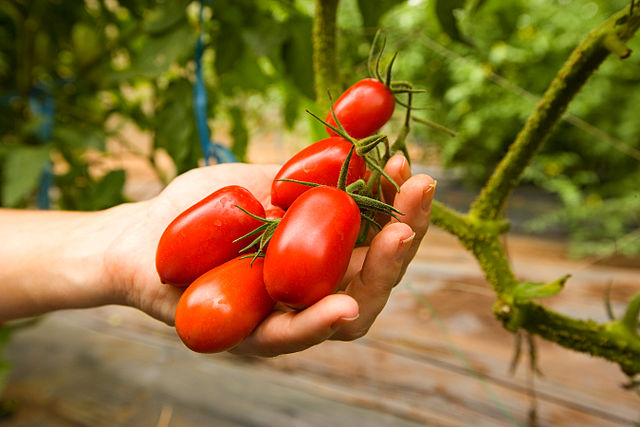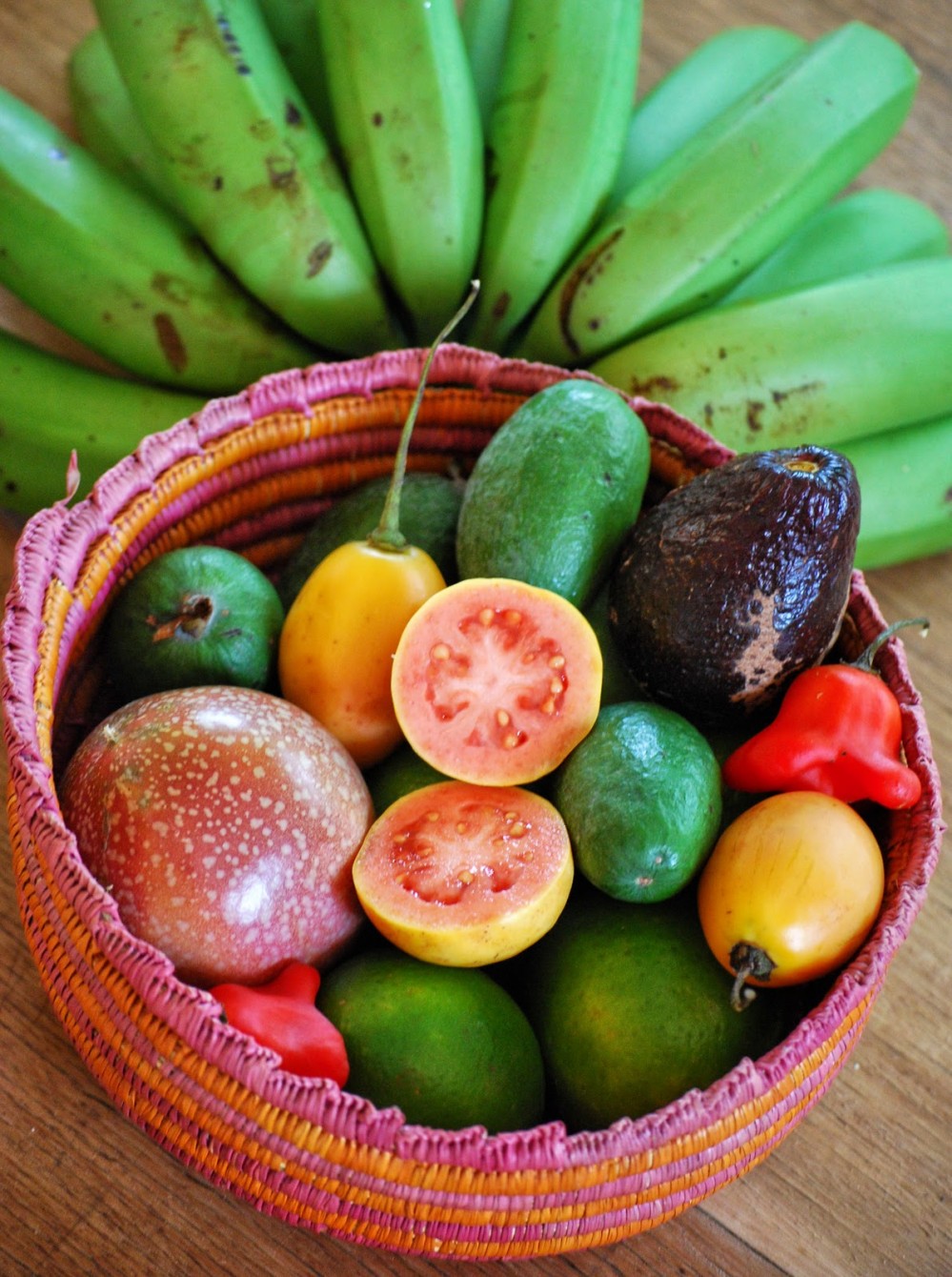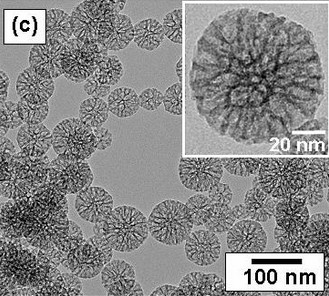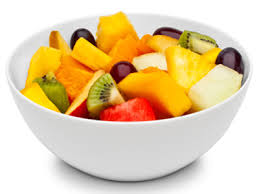Category Archives: Uncategorized
Unlabelled Irradiated ‘fresh’ fruits and vegetables: False, Misleading and Deceptive


Fresh Tomatoes.
We have been advised that on January 18 FSANZ will release the “Consulatation Paper” in response to Blewitt Recommendation 43 for the “review” of mandatory labelling of irradiated foods. We expect that the public will have until mid-March to respond to this paper.
We hope that in the spirit of the words “consultation” and “review”, the discussion paper will present more than the industry-driven case for removing mandatory labelling requirements and include: 1) Maintaining the status quo (labelling requirements which we feel could be improved) and 2) Improving labelling (to include such things prescribed wording for irradiation labelling).
Our call for comprehensive labelling should in no way be taken as support for food irradiation. It is driven by the understanding that labelling is the only means by which a member of the public can be informed about irradiation and therefore must be in place as long as irradiation is legal, to ensure that the public can make informed decisions about what they eat.
Recent approvals for the irradiation of apples, apricots, cherries, nectarines, peaches, plums, honeydews, rockmelons, strawberries, table grapes and zucchini/squash. have significantly increased the proportion of irradiated foods in the average Australian and New Zealand diet, increasing the need for strong labelling laws. FSANZ is currently processing an application for the irradiation of blueberries and raspberries.
Below are some key reasons to keep irradiated foods labelled:
1. Despite their appearance, irradiated fruits and vegetables are processed, not fresh.
2. Without Labelling, irradiated fruit and vegetables would be implicitly misrepresented as fresh -products of the irradiation process are undetectable to consumers without labelling and consumers naturally expect such products to be labelled
3. Consumers have strong opinions on irradiated produce as it is a new technology with a limited history of safe use in the human food supply
4. Food producers have raised their own queries about the removal of labelling, as it will disadvantage non-irradiating producers
5. The irradiation of fruits and vegetables typically involves their exposure to the energy equivalent of between 1.5 and 10 million x-rays. When used as a fruit fly larvae treatment, food irradiation also extends shelf life, sanitises, and alters the nutritional value of the treated foods. The substantial and significant changes made to fruits and vegetables as a result of processing with irradiation cannot be discerned with our ordinary senses. Thus, consumers could no longer rely on taste, smell, texture or appearance to exercise their preference for fresh produce, if irradiation labelling were removed.
We therefore assert that the removal of labelling from irradiated fruits and vegetables will create a situation where the public will be led to false, misleading and deceptive conclusions as to the nature of these foods, also impacting on their right to make well-informed food buying decisions that potentially impact on their diet and health.
We will share the consultation paper and our analysis of it as soon as possible. Please get ready to let your state and federal health minister know that if food is going to be irradiated, it must be labelled!
– the Food Irradiation Watch team.
RSPCA Australia Supports Ban on Irradiated Pet Foods
![Cat eating a meal Carsondelake [CC BY-SA 3.0 (http://creativecommons.org/licenses/by-sa/3.0)], via Wikimedia Commons](http://foodirradiationwatch.org/wp-content/uploads/2015/12/A_cat_eating_a_meal.jpg)
RSPCA Australia has supported a ban on irradiation of cat pet food and is opposed to pet food irradiation generally:
RSPCA Australia’s position is that pet food should not be irradiated. Currently there is a ban on the irradiation of imported cat food and we commend the Minister for implementing this ban. This ban followed scientific evidence and the recent ‘Orijen cats’ cases that showed an association between ingestion of irradiated imported cat food and severe neurological impairment, which in some cases was fatal. There is also a requirement that irradiated imported dog food be labelled ‘Must not be fed to cats’.
For more information, check out RSPCA Australia:
What is RSPCA Australia’s position on the irradiation of imported pet food products?
Research from Adelaide University Finds Food Labelling Inaquate
Nutritional information and ingredient lists on labelling are strongly regulated. However, claims of ethical standards are not regulated by the government. Free Range standards for example, do exist, however they are not regulated by government and one Free Range standard may mean quite a different thing to another Free Range standard.
Senior research associate Dr Heather Bray of Adelaide University said a recent study has used focus groups to better understand attitudes towards labelling.
“Things that at face value which may seem to be an ethical choice, we often found were more because people were thinking about taste or freshness and quality,” Dr Bray said.
“So these ideas that things marketed as having ethical claims tended to be better for a whole range of reasons that weren’t necessarily linked straight away to being better for the planet.
“Our research is really trying to understand what might motivate someone to make a so-called ethical choice, and what they thought they were doing by purchasing that product.”
Doctor Bray continued, “We saw that consumers were reducing this ethical logo into an idea that something is better or worse. So eventually it has to become a binary — you either buy or you don’t buy.”
“We do need to find better ways to engage people in conversations about how our food is produced, rather than just through labelling.
“I would like to see the labelling improved, but I think the assumption that what people will buy is representative of how they’re thinking about agriculture more broadly, is a bit narrow.
“We need to find other ways to drive the conversation around how we have our food produced now and into the future to make sure it is safe, nutritious, affordable and sustainable.”
AUDIO: ABC Rural News:
http://www.abc.net.au/news/2015-11-12/heather-bray-adelaide-uni-ethical-food-labelling/6935516
Revenge of the Irradiated Mangoes

What will we do with nuclear waste? Let’s put it in our food! Some unsuspecting fruit get a shocking surprise in this first attempt kitchen-table animation.
This short film was made ten years ago, but it’s a silly and relevant as ever.
Creative Commons License: Copyright 2012, Kim and Josh. This work is licensed under a Creative Commons License
FOE Press Release: Independent testing finds illegal and potentially harmful nanoparticles in common food products
Independent testing commissioned by Friends of the Earth has found potentially harmful nanoparticles of titanium dioxide (TiO2) and silica (SiO2) in a range of food products including M&Ms, Nestlé Coffee Mate Creamer, Old El Paso Taco Mix and Woolworths Homebrand White Sauce.
The silica and titanium dioxide in all 14 food products tested contained a high proportion of nanoparticles that have not been tested, labelled or approved for consumption in Australia. Furthermore, peer reviewed studies have raised health serious health concerns regarding the use of these nanoparticles in food.
Jeremy Tager, campaigner with Friends of the Earth’s Emerging Tech Project said “for over two years, our food regulator Food Standards Australia New Zealand (FSANZ) has insisted that foods containing nanomaterials are not sold here on the basis that no companies have applied for approval.[1] The agency has done no testing and hasn’t even asked manufacturers if its claim is true.”
“FSANZ has also told Parliament that food products containing these ingredients will not be sold until they have been subject to safety testing and pre-market approval.[2] By allowing these untested and potentially harmful substances into the food chain, FSANZ has inexcusably failed in its role as a regulator.”
Four years ago, a Government commissioned review of food labelling urged FSANZ to “develop as a matter of urgency a standard for regulating the presence of nanotechnology in the food production chain”.[3] Thus far, no action has been taken. [4]
Nano titanium dioxide is used as a whitener and brightener in a range of foods, including lollies, chewing gum and doughnuts. Children between the age of 2 and 4 have been found to have the highest exposure levels.
Animal studies of nano titanium dioxide show it can damage DNA, disrupt cell function, interfere with the immune system, cross the intestinal tract and cause organ damage.
Nano silica is used as a ‘trickle and flow’ aid in powdered food products. This year the European Commission’s Scientific Committee on Consumer Safety (SCCS) found evidence that nano silica can damage DNA[5] and concluded that the data is inadequate and no conclusion of safety can be made.[6] Several recent studies have shown that nano silica can cause liver toxicity[7].
“We provided evidence to FSANZ over a year ago that it is highly likely that foods containing manufactured nanoparticles are in the Australian food chain. The fact that every sample we tested contained a high proportion of nanoparticles, suggests that the use of nanomaterials in Australian foods is widespread,” said Mr Tager.
“Friends of the Earth Australia is calling for recall of all products containing nanomaterials and an immediate moratorium on the use of nanomaterials in food, pending full safety assessments,” concluded Mr Tager.
Media contact: Jeremy Tager: 0400 376 974
[1] FSANZ, response to Questions on Notice, Senate Estimates, SQ14-000086, February 2014. – FSANZ has told Parliament that it is “not aware of any manufactured nanomaterials being used in food available in Australia,” based on the fact that it “has not received an application to amend the Australia New Zealand Food Standards in relation to new or novel nanoscale particles for food use.”
[2] FSANZ, responses to Questions on Notice, Senate Estimates, SQ14-000074, SQ14-000082, February 2014;
SQ14-001329, SQ14-001342, October 2014.
[3] Blewett, N. et al (2011) Labelling Logic: Review of Food Labelling Law and Policy, p. 94.,http://www.foodlabellingreview.gov.au/internet/foodlabelling/publishing.nsf/Content/48C0548D80E715BCCA257825001E5DC0/$File/Labelling%20Logic_2011.pdf
[4] Review of Food Labelling Law and Policy, Progress Report, December 2014. http://www.foodlabellingreview.gov.au/internet/foodlabelling/publishing.nsf/content/Progress_report_December_2014
“Progress update: Monitoring. FSANZ is continuing to actively monitor this issue with a view to considering labelling of new technologies as required on a case-by-case basis. See actions for recommendation 2 & 28”
[5] Scientific Committee on Consumer Safety (SCCS) (2015) Opinion on Silica, Hydrated Silica, and Silica Surface Modified with Alkyl Silylates (nano form). SCCS/1545/15.March 2015,http://ec.europa.eu/health/scientific_committees/consumer_safety/docs/sccs_o_175.pdf p. 46.
[6] Ibid. p. 56.
[7] Van der Zande, M. et al. (2014) Sub-chronic toxicity study in rats orally exposed to nanostructured silica. Particle and Fibre Toxicology 11:8; Nishimori H, Kondoh M, Isoda K, Tsunoda S, Tsutsumi Y, Yagi K (2009) Histological analysis of 70-nm silica particles-induced chronic toxicity in mice. Eur J Pharm Biopharm 72:626–629; Nishimori H, Kondoh M, Isoda K, Tsunoda S, Tsutsumi Y, Yagi K (2009) Silica nanoparticles as hepatotoxicants. Eur J Pharm Biopharm, 72:496–501; Liu T, Li L, Fu C, Liu H, Chen D, Tang F (2012) Pathological mechanisms of liver injury caused by continuous intraperitoneal injection of silica nanoparticles. Biomaterials 33:2399–2407; Cho M, Cho WS, Choi M, Kim SJ, Han BS, Kim SH, Kim HO, Sheen YY, Jeong J (2009) The impact of size on tissue distribution and elimination by single intravenous injection of silica nanoparticles. Toxicol Lett 189:177–183; Lu X, Tian Y, Zhao Q, Jin T, Xiao S, Fan X (2011) Integrated metabonomics analysis of the size-response relationship of silica nanoparticles-induced toxicity in mice. Nanotechnology 22:055101; Downs TR, Crosby ME, Hu T, Kumar S, Sullivan A, Sarlo K, Reeder B, Lynch M, Wagner M, Mills T, Pfuhler S (2012) Silica nanoparticles administered at the maximum tolerated dose induce genotoxic effects through an inflammatory reaction while gold nanoparticles do not. Mutat Res 745:38–50; Xie G, Sun J, Zhong G, Shi L, Zhang D (2010) Biodistribution and toxicity of intravenously administered silica nanoparticles in mice. Arch Toxicol 84:183–190.
Nanoparticles Found in Australian Food Products

The consumer and environment advocacy group Friends of the Earth has commissioned independent research that confirms nanoparticles of titanium dioxide and Silica in a range of food products. Foods known to be affected so far include M&Ms, Nestlé Coffee Mate Creamer, Old El Paso Taco Mix and Woolworths Homebrand White Sauce.
In light of statements by Food Safety Australia and New Zealand (FSANZ) given to Parliament that food products containing these ingredients will not be sold until they have been subject to safety testing and pre-market approval, there is concern that the problem is unquantified and many more foods may contain nanoparticles.
FOE Press Release available here: Independent testing finds illegal and potentially harmful nanoparticles in common food products.
Further evidence that the government have a head in the sand approach to nanoparticles in food can be found on the Department of Health (via National Industrial Chemicals Notification and Assessment Scheme, NICNAS) website that claims “Reported uses of TiO2 nanoparticles in Australia are similar to the overseas uses — cosmetic and sunscreen products and surface coatings such as paint”. No mention of food. Without labelling requirements, and with the government denying the presence of nanoparticles, consumers are unable to decide to exercise caution in the consumption of foods containing nanoparticles.
Read the NICNAS Nanoparticle Report.
There are few safety studies available on the use of nanoparticles in food, but studies that have been done on nanoparticles point to potential carcinogenic affects, genotoxicity or immune system compromise. The report “Titanium dioxide nanoparticles: a review of current toxicological data” provides a review of current research. Part of the finding raises concern about pulmonary inflammation and lung cancers:
“Pulmonary inflammatory responses and lung cancers are the most important adverse effect observed in experimental animals due to TiO2 NP exposures. When only using realistic doses are considered, as in the case of some inhalation studies, inflammatory responses are still a prominent effect seen. ” http://www.particleandfibretoxicology.com/content/10/1/15
More research is needed before deciding on whether nanoparticles are safe for human consumption.
UPDATE: In response to the SMH article Nanotechnology Found in Popular Foods Despite Repeated Denials by Food Regulators, FSANZ has released this statement. The statement essentially amounts to “FSANZ and other international food regulatory agencies have not identified any health effect known to be associated with the use of nanoparticles of titanium dioxide and silica, following oral ingestion in foods”. They have also announced that a leading toxicologist will be undertaking a review into nanoparticles in food, with the final report expected to be published in late 2015 to early 2016.
Take Action on Food Labelling!
Our food regulator, Food Standards Australia New Zealand (FSANZ) is failing to ensure that the food we eat is safe and properly labelled so that we can make informed choices.
FSANZ consistently puts the interests of big business before public health. The agency has allowed the rapid introduction of new ingredients with minimal or no testing – including genetically modified and nano-ingredients. It allows food ingredients that are banned or restricted in other countries for safety reasons – including food additives and trans fats. It has failed to regulate pesticide residues and food irradiation in a precautionary and pro-active way. FSANZ has also failed to ensure that labelling laws provide us with the information we need.
Tell Fiona Nash you’re fed up with FSANZ (link to http://fedupwithfsanz.net/)
We want to change the way FSANZ does business and we need your help! Please email the Assistant Minister for Health, Senator Fiona Nash, and ask her to ensure that FSANZ makes food safety and our right to know its top priorities.
Take Action! (link to http://fedupwithfsanz.net/)
Say NO! to Irradiated Cocktail

 Food Standards Australia New Zealand (FSANZ) is recommending the irradiation of apples, apricots, cherries, nectarines, peaches, plums, honeydew, rockmelon, strawberries, table grapes, zucchini and squash – the latest move to expand the use of irradiation on fresh produce in Australia. This means that a large part of our fresh food diet can potentially be irradiated, increasing the risks to human health.
Food Standards Australia New Zealand (FSANZ) is recommending the irradiation of apples, apricots, cherries, nectarines, peaches, plums, honeydew, rockmelon, strawberries, table grapes, zucchini and squash – the latest move to expand the use of irradiation on fresh produce in Australia. This means that a large part of our fresh food diet can potentially be irradiated, increasing the risks to human health.
NOW is the time to write a submission.
- Submissions need to be made in writing; be marked clearly with the word ‘Submission’ AND quote the project number and name: A1092: Irradiation of Specific Fruits & Vegetables
- Submissions can be made electronically through the FSANZ website via: http://www.foodstandards.gov.au/code/changes/submission/pages/Submission-Form.aspx
- You can also email your submission directly to: submissions@foodstandards.gov.au
DEADLINE FOR SUBMISSIONS: 6pm (Canberra time) 9 October 2014
News: Apples, Grapes, Strawberries and Other Popular Fruits Could Soon Be Treated With Irradiation

 Food Standards Australia New Zealand (FSANZ) is recommending apples, apricots, cherries, nectarines, peaches, plums, honeydew, rockmelon, strawberries, table grapes, zucchini and squash be permitted in the latest expansion of the use of irradiation on fresh foods in Australia. NOW is the time to write a submission.
Food Standards Australia New Zealand (FSANZ) is recommending apples, apricots, cherries, nectarines, peaches, plums, honeydew, rockmelon, strawberries, table grapes, zucchini and squash be permitted in the latest expansion of the use of irradiation on fresh foods in Australia. NOW is the time to write a submission.
“The treatment is already approved for tomatoes, capsicums, persimmons, herbs and spices, herbal infusions and some tropical fruits….The proposal could potentially push up prices because of mandatory labelling requirements and other costs, risk assessment documents reveal”, reports the Herald Sun.
The proposal is being put forward by Queensland’s Department of Agriculture, Fisheries and Forestry, one of the agencies ostensibly intended to monitor and police the use of new technologies in food, suggesting a conflict of interest and possible stacking by industry pundits.
“Irradiation is being sought as an alternative treatment to some pesticides, which are no longer permitted or permissions for use have changed,” Food Standards Australia New Zealand chief Steve McCutcheon told the Herald-Sun newspaper, “FSANZ has reviewed the evidence on the safety of these irradiated fruits and found they are safe to eat. The literature also shows the maximum dose permitted does not reduce the nutritional quality.”
However, irradition has been banned by the Australian Government for use on cat food after more than 50 cats became ill or died as a result of eating irradiated products. A high rate of pet neurological disorders in the US is also linked with irradiation. Research has found that irradiation decreases the vitamin content of fresh foods, and creates ‘unique radiolytic products’ that do not occur in nature. Read more about the risks of irradiation [here]
Final approval requires the participation of state ministers, and FSANZ is currently accepting submissions from the public. Read the FSANZ application and submit your letter of rejection here: http://www.foodstandards.gov.au/code/applications/Documents/A1092%20Irradiation-CFS.pdf

